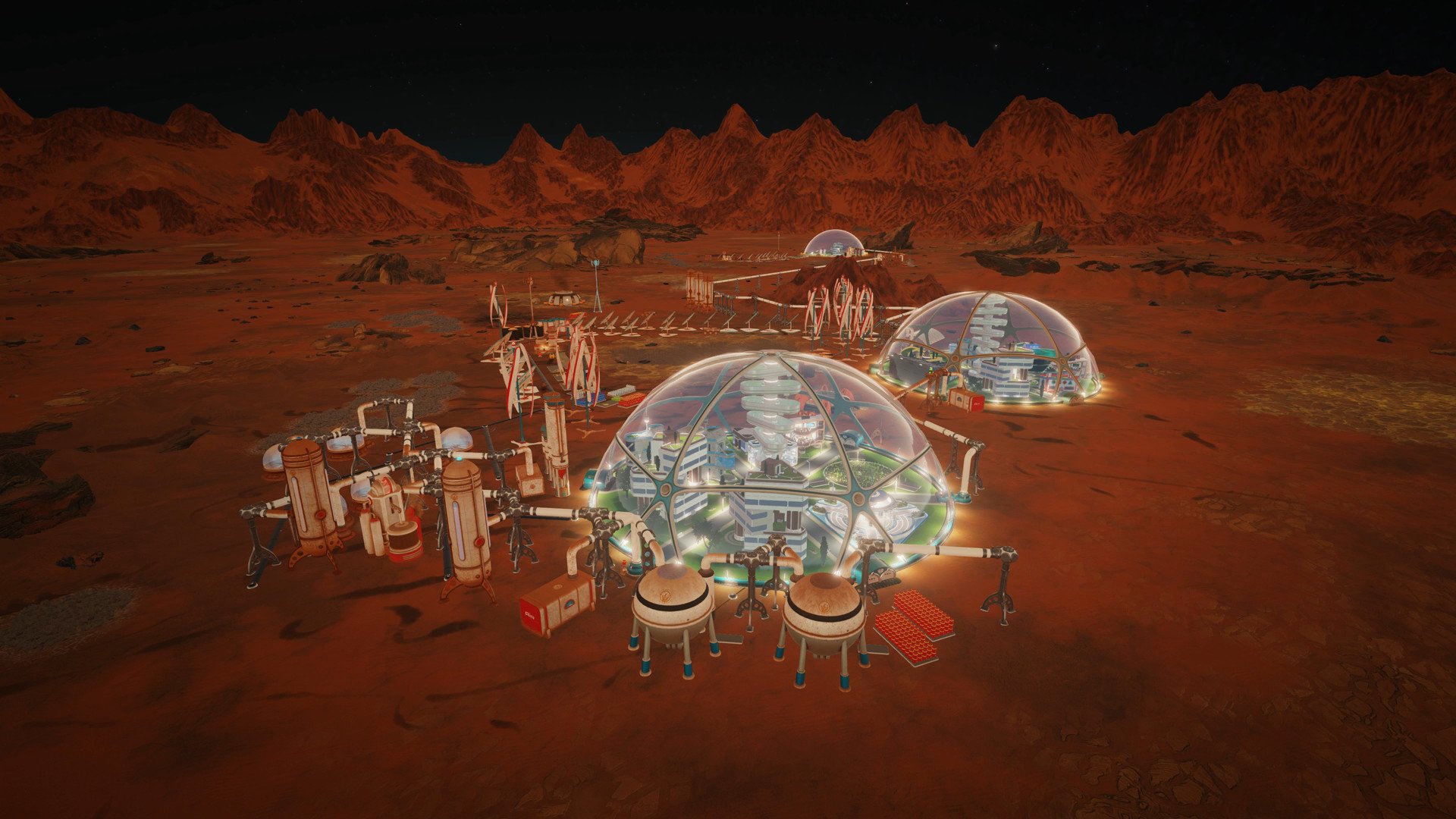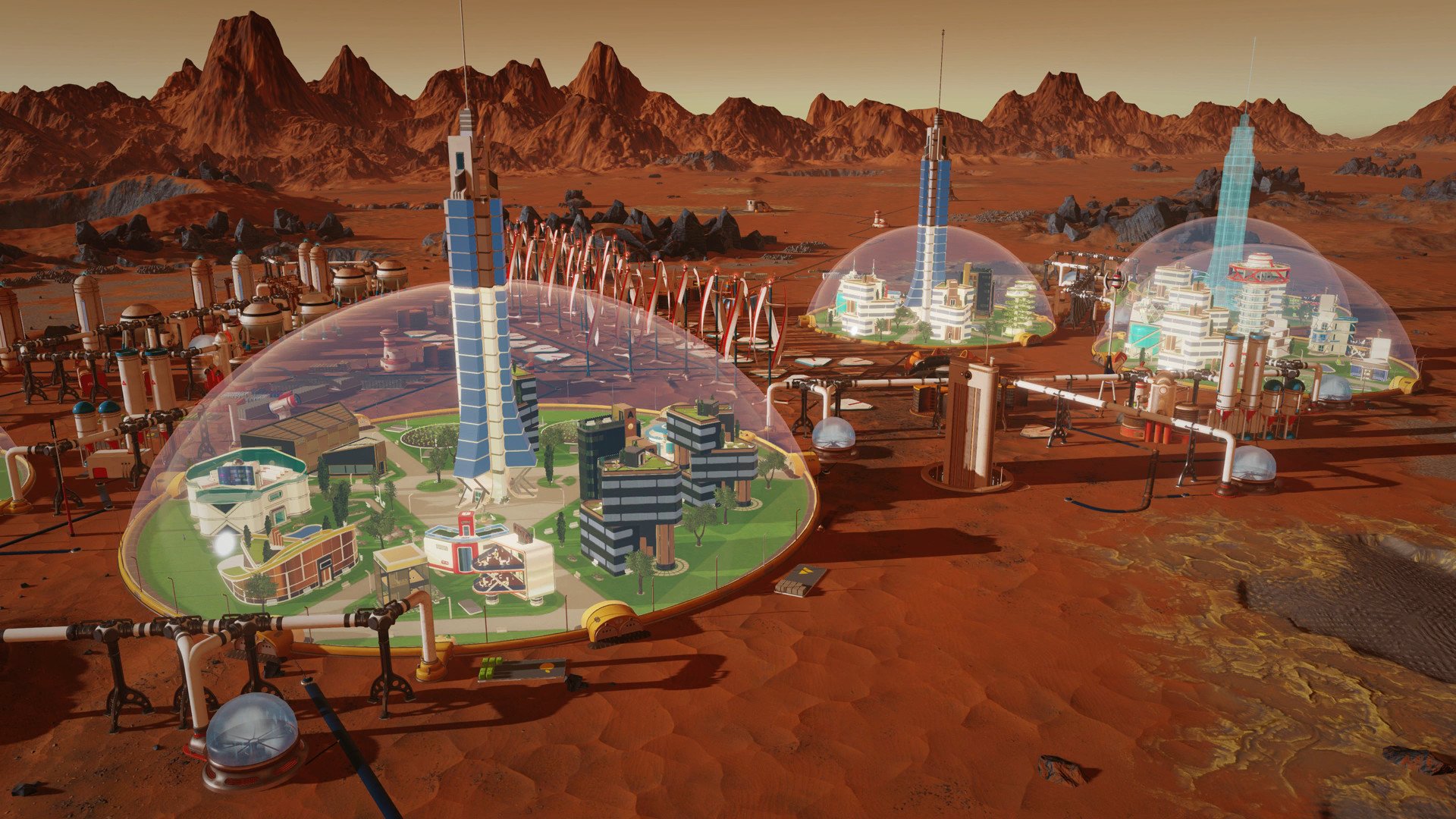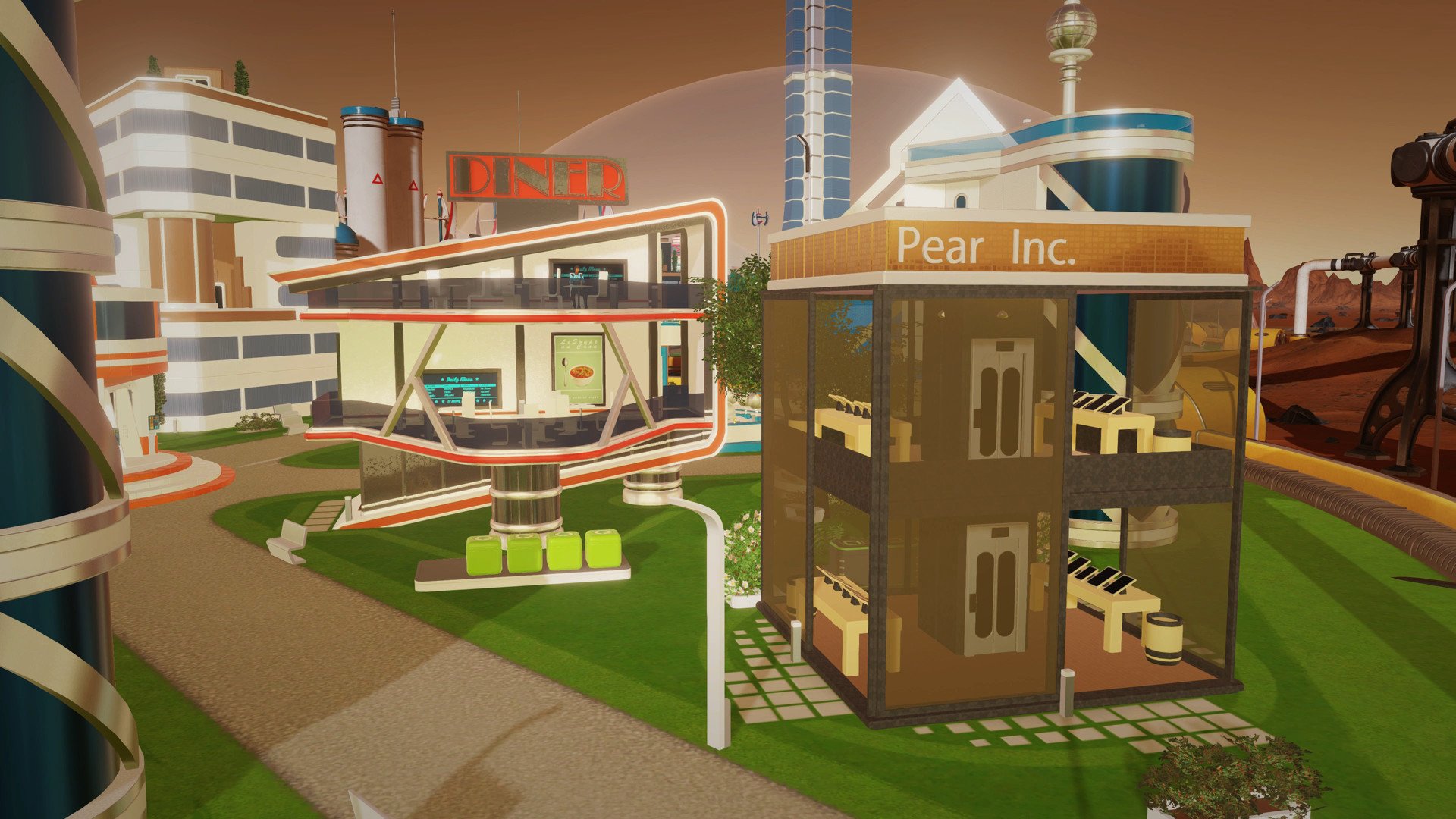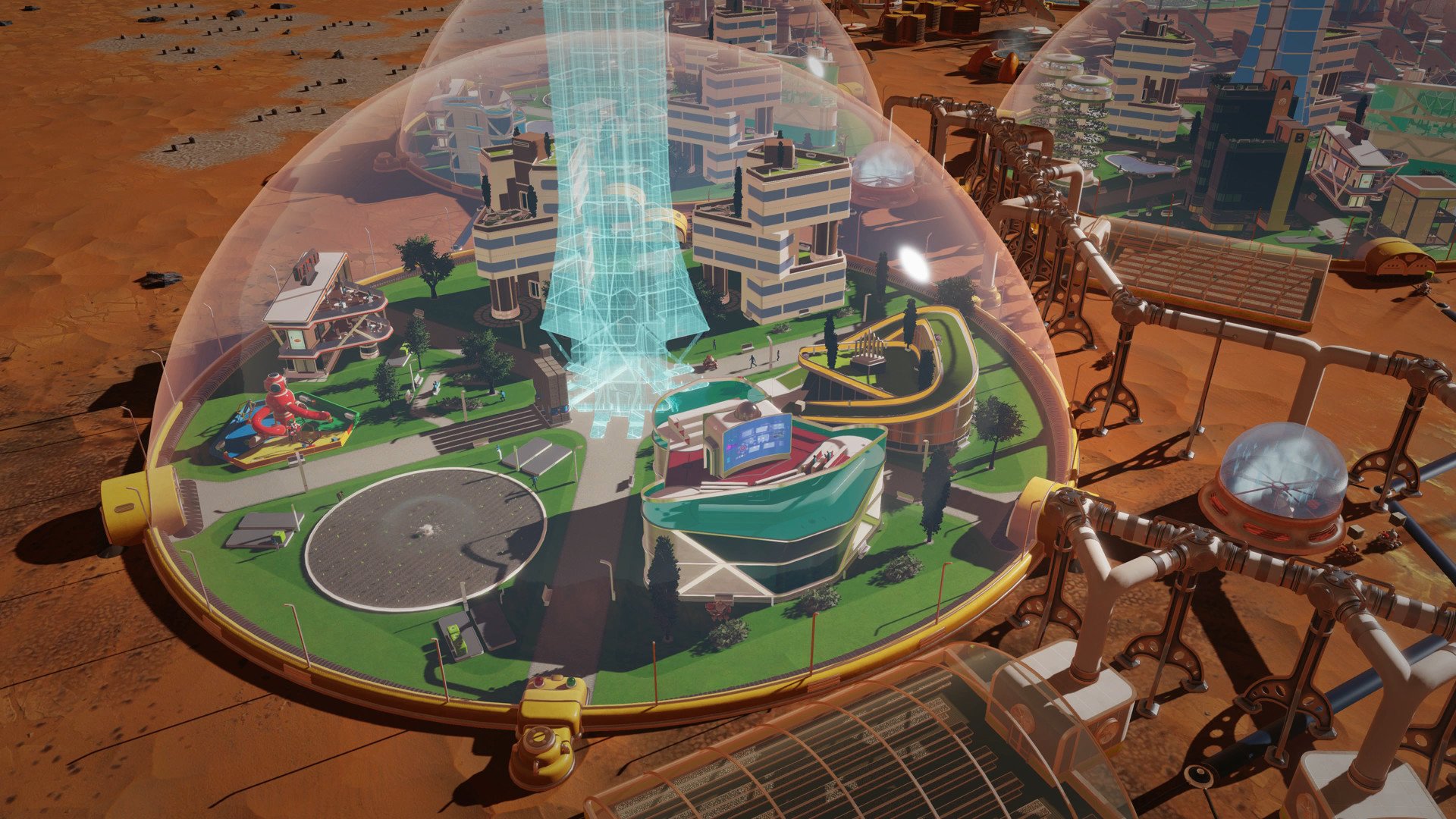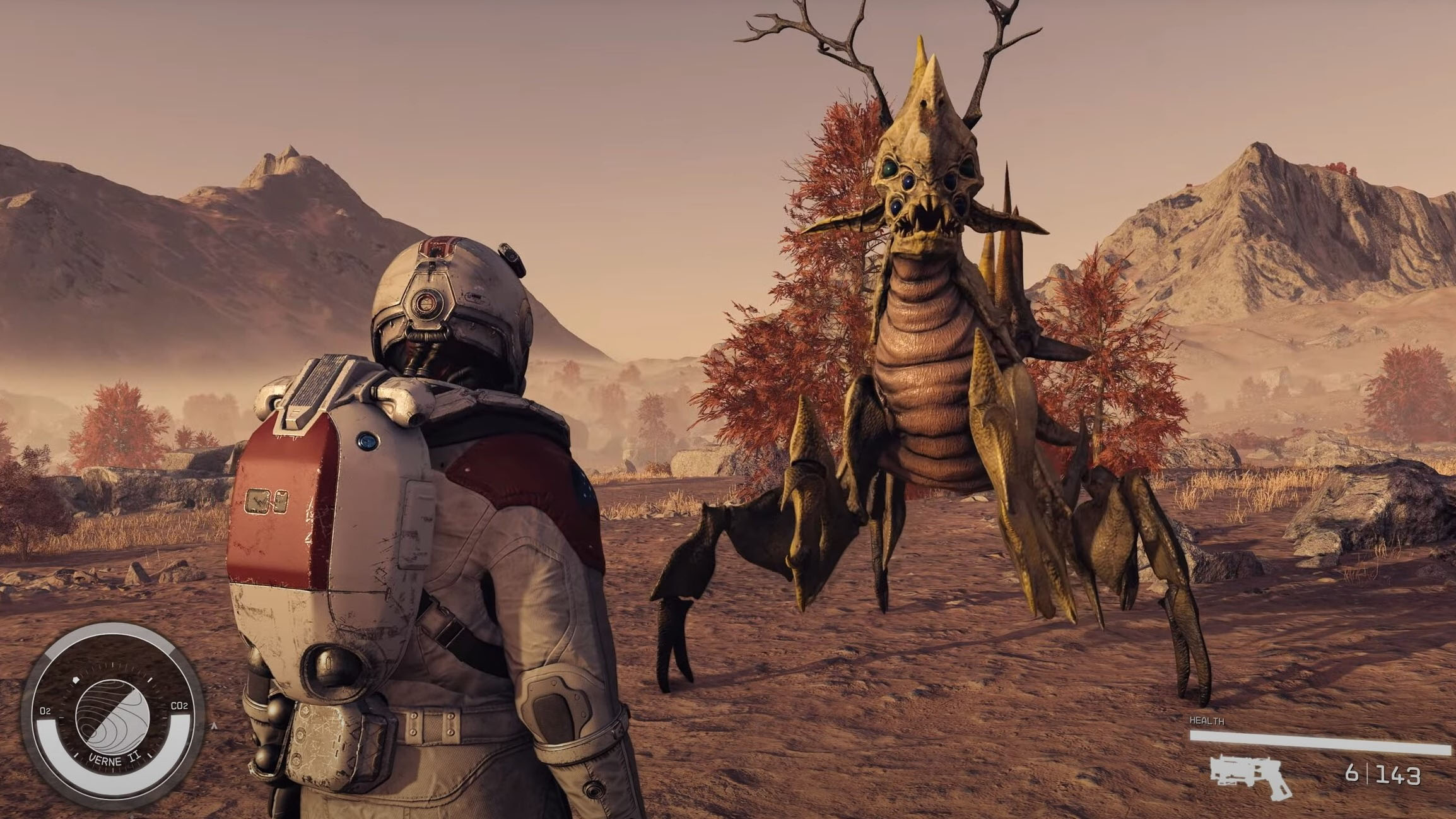
Surviving Mars from Haemimont Games is a true triumph, and represents a game I've been yearning for for years.
My hopes were high for this game, and the studio not only smashed my expectations, I found myself in awe at the beauty and complexity they have managed to cram into this aggressively addictive simulation game.
Whether you're playing on Xbox One or PC, fans of city builders absolutely cannot afford to miss this game.
Visuals, Setting, and Sound Getting Red
Surviving Mars, as you might expect, takes place on the eponymous red planet. Dust storms, meteor showers, and a harsh, oppressive landscape stands between you and complete colonization. Surviving Mars' engine is both beautiful and performant.
One of the issues with games of this type stem from system resource load as your colonies or cities get bigger and more complex. After dozens of hours of play, I was thoroughly impressed with how Surviving Mars ran on the Xbox One X and on my GTX 1060 Core i7 quad-core Surface Book 2, even as my cities grew in complexity.
The Xbox One X in particular crushes Surviving Mars, running at a gorgeous 4K-native resolution at 30 frames per second. I was disappointed by the lack of advanced graphics settings on the Xbox One X version, however. I'd have preferred additional options for frame rate limiters and perhaps resolution options to prioritize performance, as some slowdown can occur when your city gets bigger and bigger. That said, it's never prohibitively bad. And it's impressive, because as more and more colonists, robots, and drones that begin flooding your city, things can get pretty crazy.
Surviving Mars, like Cities: Skylines, features some extreme levels of zoom, allowing you to get up close and personal with your colonists and city domes.
All the latest news, reviews, and guides for Windows and Xbox diehards.
Surviving Mars can produce some truly striking vistas.
You might think that Surviving Mars would have skimped on high-res assets for objects in the game's world due to its top-down nature, but this isn't the case. Most objects feature great textures which very smoothly scale dynamically as you zoom in and out. As a result, Surviving Mars can produce some truly striking vistas and intimiate up-close scenes for snapping screenshots with the game's Photo Mode.
Like many other Paradox Interactive-published titles, Surviving Mars features an in-game radio that has some surprisingly catchy tracks. A couple of the radio stations even feature Grand Theft Auto-style radio host parodies, which adds a nice touch of flavor. I'd love to see the game expand the dialogue in these radio stations n future updates, particularly the Official Mars Channel, which features some nifty science trivia.

In beautiful contrast to the sun-blasted hellscape outside, the dome interiors can have hanging gardens, high-tech labs, and even casinos, some with multiple customizable skins. It's a pleasure watching your colonists scurry around their delicate oases, and thankfully you can pause the flow of time to take in sights. Otherwise, you'd be far too busy to take a break. Surviving Mars can be a demanding game.
Gameplay Becoming Elon Musk
Surviving Mars has incredible gameplay that is as addictive as it is challenging. The game emulates the chaos and difficulty of setting up a new Martian colony by forcing you to micro-manage all sorts of gameplay features and systems, which can be overwhelming at first. Thankfully, there are a handful of light tutorials on hand, and as you progress further into the game and research new technology, the "Eureka!" moments start trickling through, making your colony evolve in exciting and interesting ways.
Surviving Mars has incredible gameplay that is as addictive as it is challenging.
The early days of space colonization are wholly dependent on Earth. Armed with a handful of drone worker robots and more specialized rovers, you can build solar panels and wind farms help power the early years of your colony. Later, you'll research more powerful technology, like Fusion reactors. Of course, all of these facilities require materials for maintenance and repairs, Mars is a pretty hazardous place after all. Until your colony is big enough to synthesise its own more advanced parts, you'll rely on cargo drops from Earth. Eventually, though, your colony will become advanced enough to be entirely self sufficient, with sci-fi farms, deep-mining operations, and all sorts of factories.

I started Surviving Mars over multiple times to learn all of its systems, and figure out the "flow" of the game. I suspect many other players will too. Learning where to spend research points, where to prioritize your materials, and how to be efficient with your limited options is crucial to success in Surviving Mars. As your colony grows in size and technological advancement, you'll be able to move away from micro-managing and towards full automation, setting up flying drone supply routes, anti-meteor lazers, and huge "Wonder" projects to ensure your self-sufficiency on the red planet. Simply put, getting to grips with Surviving Mars is a true joy.
Simply put, getting to grips with Surviving Mars is a true joy.
The technology that powers your cities is based on real-world theories about the colonization of Mars. While the game is anchored in realism, the game takes some liberties with its "Mystery" system, which drops unique storylines and mechanics in each game. You can disable them, of course. In fact, you can customize every aspect of your colony's birth, choosing how much initial funding you want, special perks, and even the drop zone on the planet.
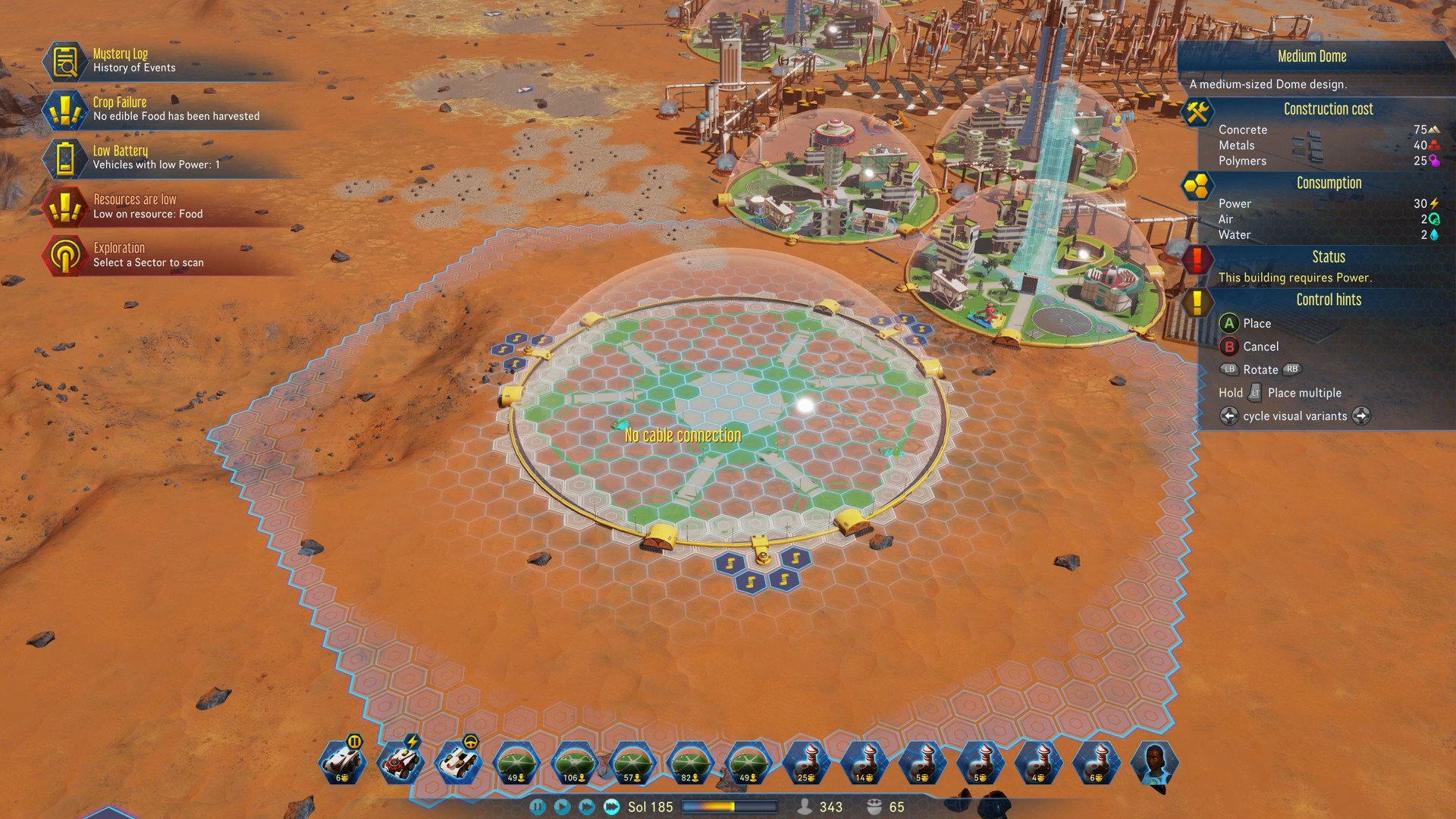
The Mysteries are interesting and add a bit of flavor, granting unique rewards for completing them. I aided an aging billionaire who sought to colonize other parts of the solar system, granting him access to my resources and research in exchange for unique technology. As a result of my efforts, I was granted a new crop type that was far more water efficient than the ones I had access to previously. However, even the most prosperous and advanced colonies can suffer from disasters.
Taking what you've learnt to build a more efficient colony is part of the fun.
In one of my earlier colonies, I simply didn't expand fast enough, and ended up bleeding dry my funding before I had secured alternative pools of resources. As I struggled on minimum life support, water and oxygen generation were low, I gradually extended my colony outwards towards a crucial metal deposit, critical for repairing my solar energy farms. Unfortunately, Mother Nature had other plans.
A huge dust storm ripped through my main colony, destroying a field of solar panels in the process. My moisture farms shut down as a result of the dust, leading to a water shortage, which led to crop failure, which led to famine. With colonists literally dying, nobody was left to staff my Fusion power plant, resulting in a critical power failure. The knock on effect of all these inter-dependent systems failing was palpable, and became a huge learning experience for my next attempt. Of course, I could have simply reloaded an earlier save and tried something else, but taking what you've learnt to build a more efficient colony is part of the fun.
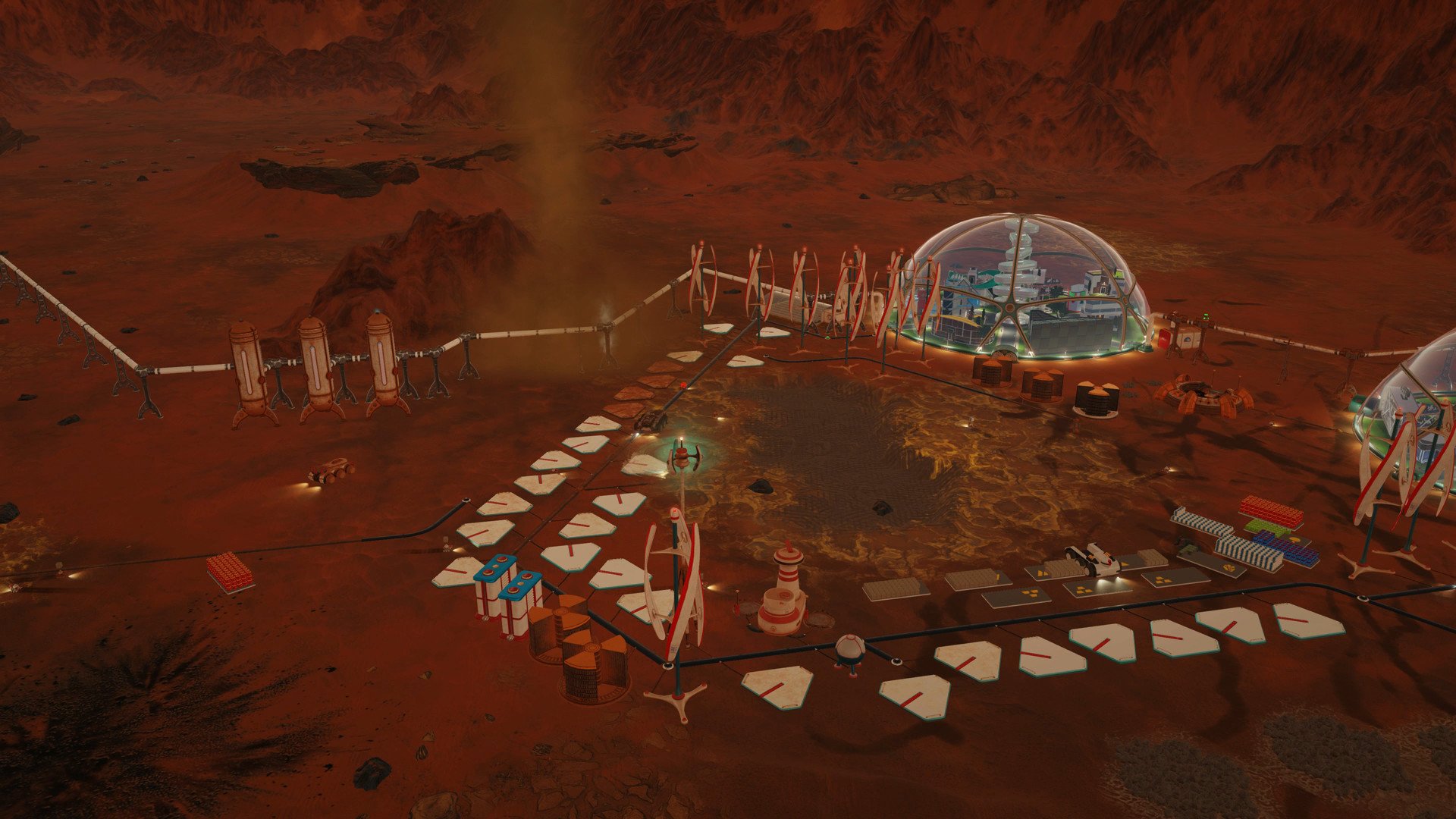
There are a few pain points I hope the developer will rectify with feedback (and Haemimont has already pledged robust post-launch support). For example, on both Xbox One and PC it can be quite hard to make precise selections at times, more so with a controller. Also, colonist management on Xbox One especially is frustrating. Far too often did I find colonists with specializations designed for buildings they were refusing to work in, and manually selecting them to find them a more efficient place of work was a chore. Over all though, the control schemes on Xbox One certainly aren't bad, but there's definitely room for improvement.
It would also be nice if you could set behavioural policies too, for example, sometimes I just want my colonists to stop breeding for five minutes. I feel that on Mars, where supplies are always in short supply, colonists would be willing to use some contraception to ensure against overpopulation. It's also difficult to get an overview of your resources, particularly if you simply want to review the resources or flow of drones in a particular area. There's often managerial guesswork involved as a result.
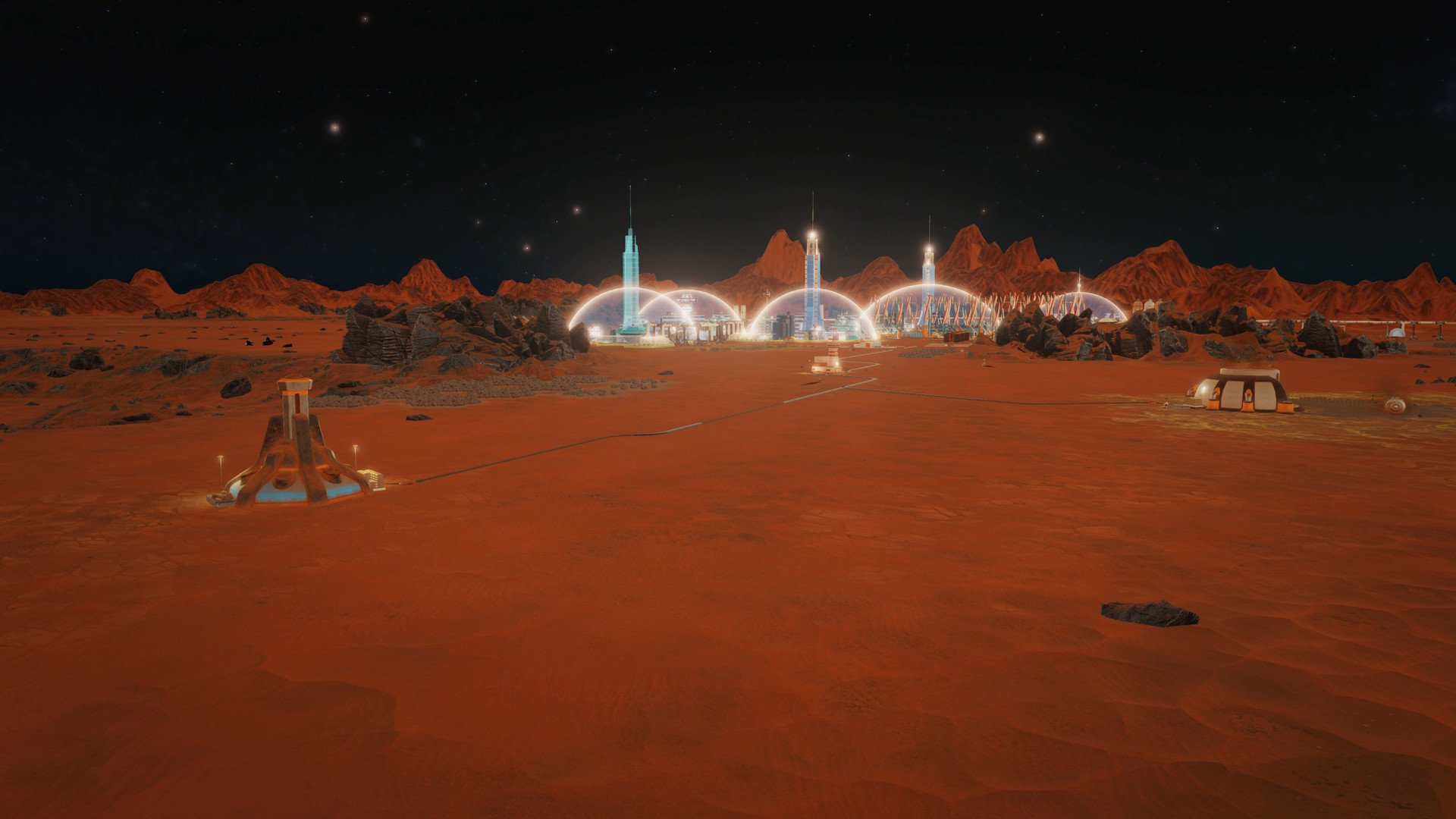
Some of these things will undoubtedly be improved upon in post-launch patches, but the core gameplay is so damn good it's easy to overlook the downsides.
Final Thoughts Must-buy for city builder fans
Surviving Mars is an utterly incredible game that easily ascends into my personal top list of best Xbox One games of all time. The abundance of emergent gameplay mechanics, the ability to build, create, and customize your personal colony, and indulge in all of those sci-fi fantasies of colonizing space has never been realized this well before.
The visuals are performant, crisp, and majestic on Xbox One X and PC. Managing hazards, resources, and colonists feels dynamic and exciting, and the large amount of building types and decorations will keep creative city-builders obsessing over the details for hours and hours.
Pros:
- Addictive, challenging, rewarding gameplay.
- Great visuals and performance.
- Huge amount of buildings and customization.
- Hours and hours of gameplay.
Cons:
- UI and controls could be polished and improved.
If you're a fan of city-building gameplay Surviving Mars is a must-buy title. Even if you prefer a more creative experience you can tailor the difficulty to that end, or ramp up the scarcity for a true survival experience, where battling the elements almost feels more like a real-time strategy. I leave this review excited to get back to watching my swarms of drones scurrying around, and look forward to see how Haemimont will evolve the experience in the coming months.
You can grab Surviving Mars for $39.99 for Xbox One, PC, and PlayStation 4.
This game was reviewed primarily on Xbox One X and tested on PC using copies provided by the publisher.

Jez Corden is the Executive Editor at Windows Central, focusing primarily on all things Xbox and gaming. Jez is known for breaking exclusive news and analysis as relates to the Microsoft ecosystem while being powered by tea. Follow on Twitter (X) and tune in to the XB2 Podcast, all about, you guessed it, Xbox!
